In a world where speed often equals survival, some creatures have evolved to embrace the opposite strategy. Among reptiles, snakes are frequently associated with lightning-fast strikes and swift movements, but not all serpents prioritize velocity. The slowest non-venomous snake in the world presents a fascinating study in evolutionary adaptation, demonstrating that in certain ecological niches, patience trumps pace. This remarkable reptile has perfected the art of slow-motion hunting, using deliberate movements and extraordinary camouflage rather than speed to secure its next meal. Let’s explore the intriguing world of this unhurried predator and discover how its seemingly disadvantageous trait has become a successful survival strategy.
Identifying the World’s Slowest Non-Venomous Snake

The rosy boa (Lichanura trivirgata) is widely considered the slowest non-venomous snake in the world. Native to the southwestern United States and northwestern Mexico, this small to medium-sized snake moves at an extraordinarily leisurely pace compared to its serpentine relatives. While most snakes can move at speeds ranging from 1 to 5 miles per hour, the rosy boa typically travels at a fraction of this rate, often covering just a few feet per minute when not motivated by threats. Their unhurried nature is immediately apparent to observers, as they seem to flow across the ground with deliberate, measured movements that appear almost contemplative. This extreme slowness isn’t a defect but rather a specialized adaptation perfectly suited to their hunting strategy and habitat.
Physical Characteristics of the Rosy Boa

The rosy boa possesses a sturdy, cylindrical body typically reaching 2 to 3 feet in length, though some specimens may grow slightly larger. Their most distinctive feature is their coloration, which includes three longitudinal stripes running the length of their body in combinations of tan, brown, or gray, often with a pinkish or rosy hue on their underside that gives the species its common name. With small, smooth scales and a blunt, rounded head that’s barely wider than their neck, rosy boas have a gentle, non-threatening appearance that matches their sluggish demeanor. Their eyes have vertically elliptical pupils adapted for nocturnal hunting, and their body is remarkably muscular despite their slow movement, allowing them to be extraordinarily powerful constrictors. Unlike many other snake species, rosy boas maintain a relatively constant girth from head to tail, giving them a characteristic “sausage-like” appearance.
Habitat and Geographic Distribution

Rosy boas are desert specialists, inhabiting some of the harshest arid environments in North America. They range throughout the Mojave and Sonoran Deserts, including parts of California, Arizona, Nevada, and northwestern Mexico. Within these regions, they show a preference for rocky outcroppings, boulder fields, and desert slopes where they can find shelter from extreme temperatures and protection from predators. These snakes are remarkably adaptable within their range, occupying elevations from sea level up to about 5,000 feet in mountains bordering desert habitats. Their limited geographic distribution correlates with specific habitat requirements, as they need environments that provide both adequate hiding places and a sustainable population of small prey animals. Unlike many desert reptiles that range widely, rosy boas often spend their entire lives within a relatively small territory, sometimes just a few acres in size.
The Evolutionary Advantage of Slowness
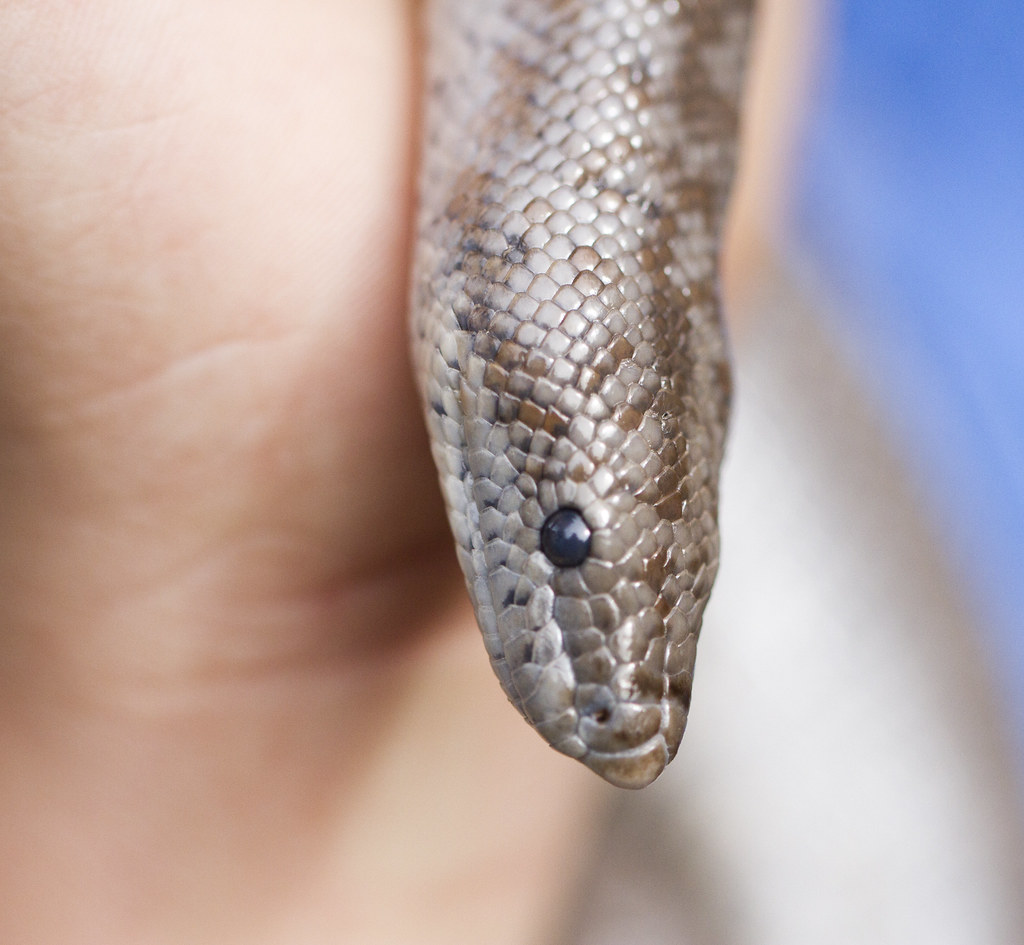
The extraordinary slowness of the rosy boa might seem counterintuitive in a world where predators typically need speed to catch prey, but this trait represents a specialized evolutionary strategy perfectly adapted to their hunting methods. Moving slowly allows these snakes to approach prey virtually undetected, as sudden movements would alert potential meals to their presence. This deliberate pace conserves valuable energy in their resource-scarce desert habitat, where every calorie counts and opportunities for feeding may be weeks apart. Their slowness is complemented by remarkable patience, allowing them to wait motionless for extended periods until prey comes within striking distance. Additionally, slow movement generates minimal heat, helping these ectothermic creatures maintain appropriate body temperatures in their extreme desert environment where overheating is a constant threat.
Hunting and Feeding Behavior
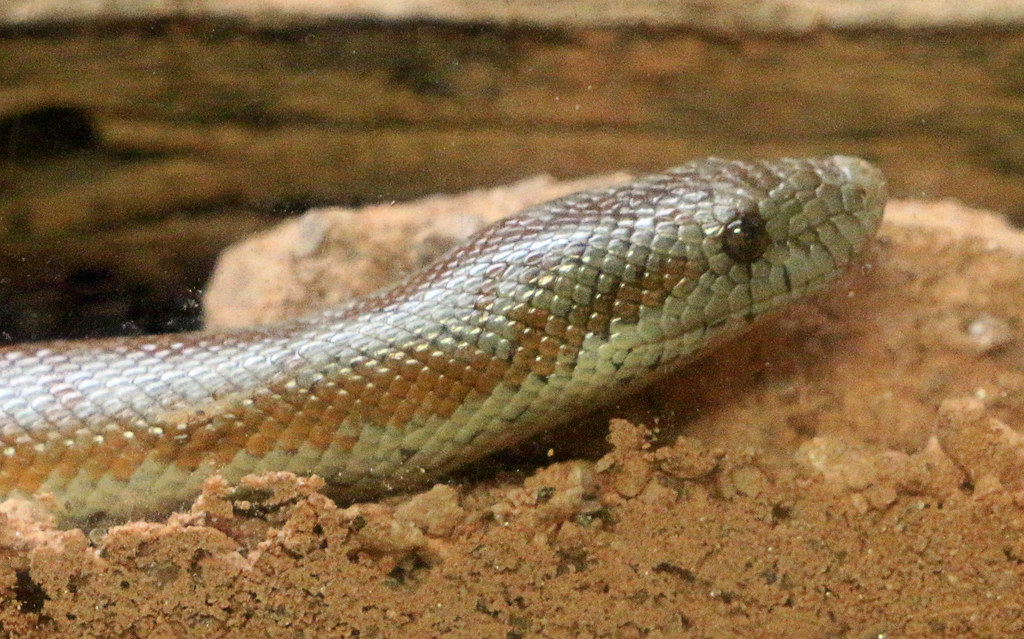
Despite their unhurried pace, rosy boas are surprisingly effective predators that have perfected an ambush hunting strategy. Rather than actively pursuing prey, they position themselves near rodent trails or nest sites and wait, sometimes for hours, for potential meals to come within striking distance. When a suitable prey animal approaches, the snake strikes with surprising precision, grabbing the victim with its jaws before rapidly wrapping coils around it to apply constricting pressure. Their diet consists primarily of small mammals such as mice, kangaroo rats, and young rabbits, though they occasionally consume small birds and lizards when opportunity presents. Interestingly, rosy boas can consume prey items that appear too large for their body size, stretching their jaws dramatically to accommodate meals that may equal 25% of their own body weight.
Defense Mechanisms and Predator Avoidance
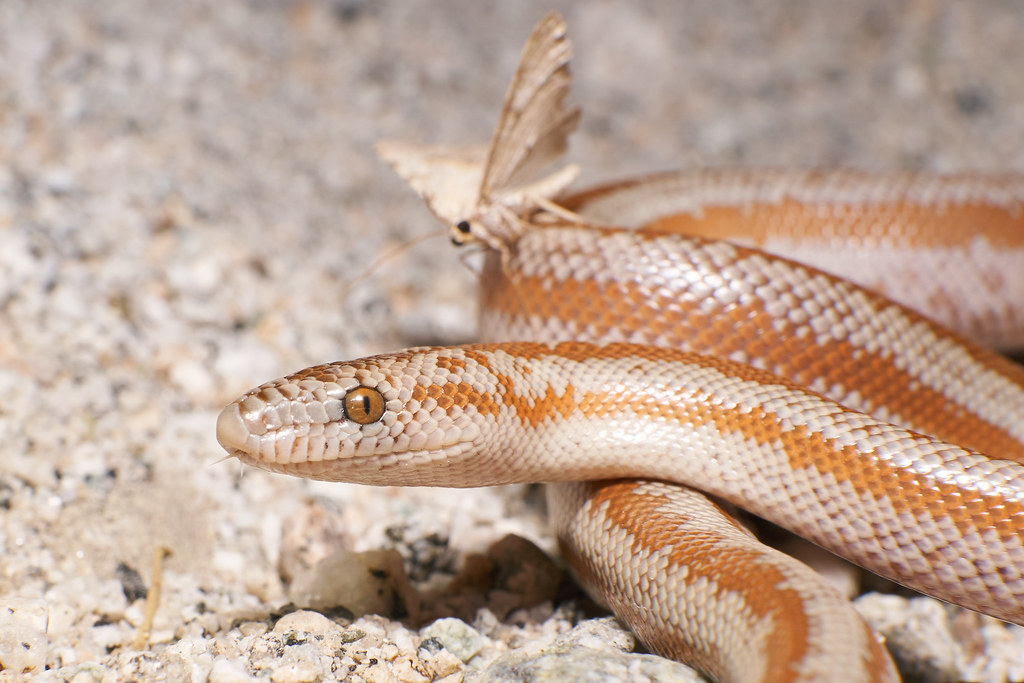
Without venomous defenses or the ability to flee quickly, rosy boas have developed alternative strategies to avoid becoming prey themselves. Their primary defense relies on remaining hidden, utilizing their excellent camouflage to blend perfectly with the desert substrate and rocky environments they inhabit. When threatened, rather than attempting to escape at speed (which would be futile given their slow nature), they often roll into a tight ball with their head protected in the center and their tail exposed. The tail may be waved slightly to distract potential predators from the more vulnerable head region. Another defensive behavior involves releasing a foul-smelling musk from glands near the base of the tail, making them unpalatable to many would-be predators. Their nocturnal habits also serve as protection, allowing them to move under the cover of darkness when many visual predators are less active.
Reproduction and Life Cycle
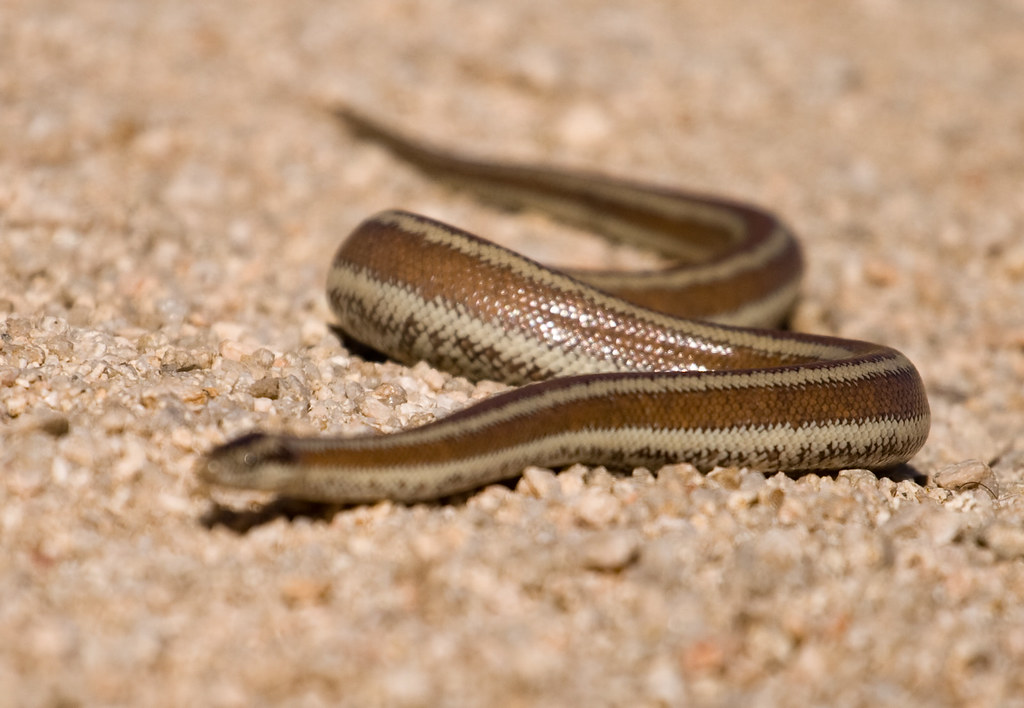
The reproductive strategy of rosy boas differs markedly from many other snake species in ways that complement their slow lifestyle. Unlike most snakes that lay eggs, rosy boas are ovoviviparous, meaning they give birth to fully developed live young after carrying them internally for approximately 4-5 months. A typical litter consists of 3-8 neonates, each measuring about 10-12 inches in length and already displaying the distinctive striped pattern of adults. The young are independent from birth and capable of capturing small prey within days, though they grow at a relatively slow rate compared to many other snake species. Sexual maturity is reached at around 3-4 years of age, and these snakes can live exceptionally long lives, with some captive specimens reaching 25-30 years or more—another aspect of their biology that embraces the “slow and steady” approach to life.
Comparison with Other Slow-Moving Snake Species

While the rosy boa holds the title for the slowest non-venomous snake, several other species are known for their unhurried pace. The rubber boa (Charina bottae), a close relative of the rosy boa native to western North America, exhibits similarly sluggish movements and shares many ecological traits with its desert-dwelling cousin. Python species, particularly the heavy-bodied Burmese and reticulated pythons, move quite slowly on land due to their substantial body mass, though they can achieve surprising bursts of speed when striking at prey. The African ball python (Python regius) is another notoriously slow mover, often preferring to remain coiled in one location for extended periods. What distinguishes the rosy boa from these other slow species is its combination of consistent slowness in all activities—from hunting to traveling—and its remarkable adaptation to an environment where most creatures have evolved for speed and agility.
Conservation Status and Threats
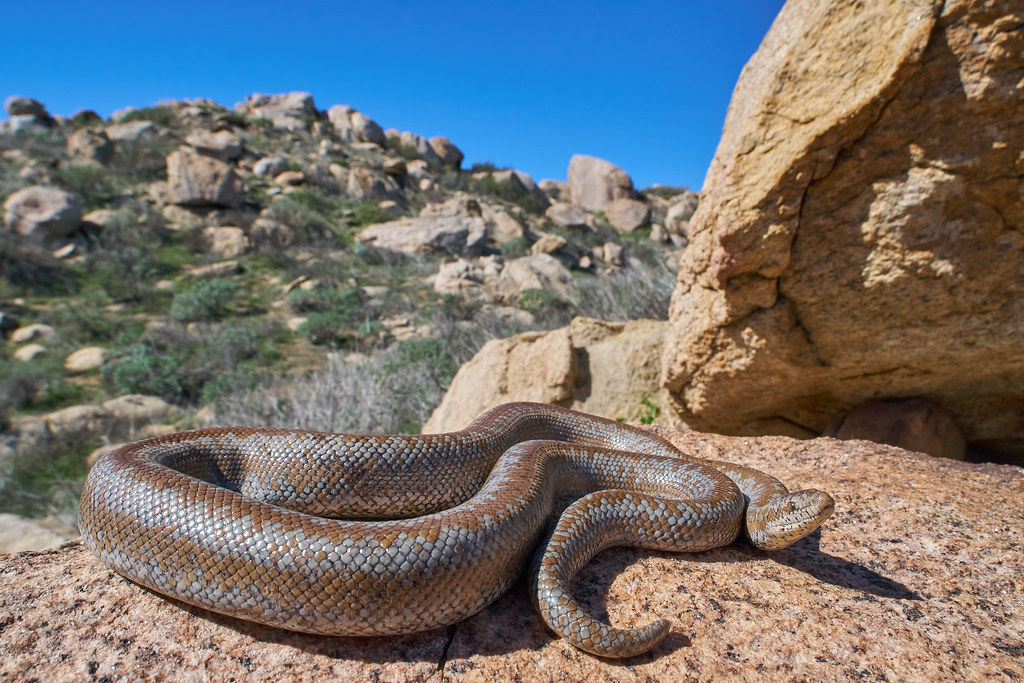
The current conservation status of the rosy boa remains relatively secure, with the species listed as “Least Concern” on the IUCN Red List. However, localized populations face significant and increasing pressures that could threaten their long-term survival. Habitat destruction represents the most serious challenge, as desert development for housing, solar energy installations, and mining operations fragments their limited range and destroys the specific rocky microhabitats they require. Their slow movement makes them particularly vulnerable to road mortality, as they cannot quickly cross highways that now intersect their habitat. The pet trade has historically impacted wild populations, though most rosy boas in captivity today are captive-bred rather than wild-caught. Climate change poses a growing threat, as increasing temperatures and changing precipitation patterns alter the delicate desert ecosystems these specialized reptiles depend upon.
Adaptations to Desert Life
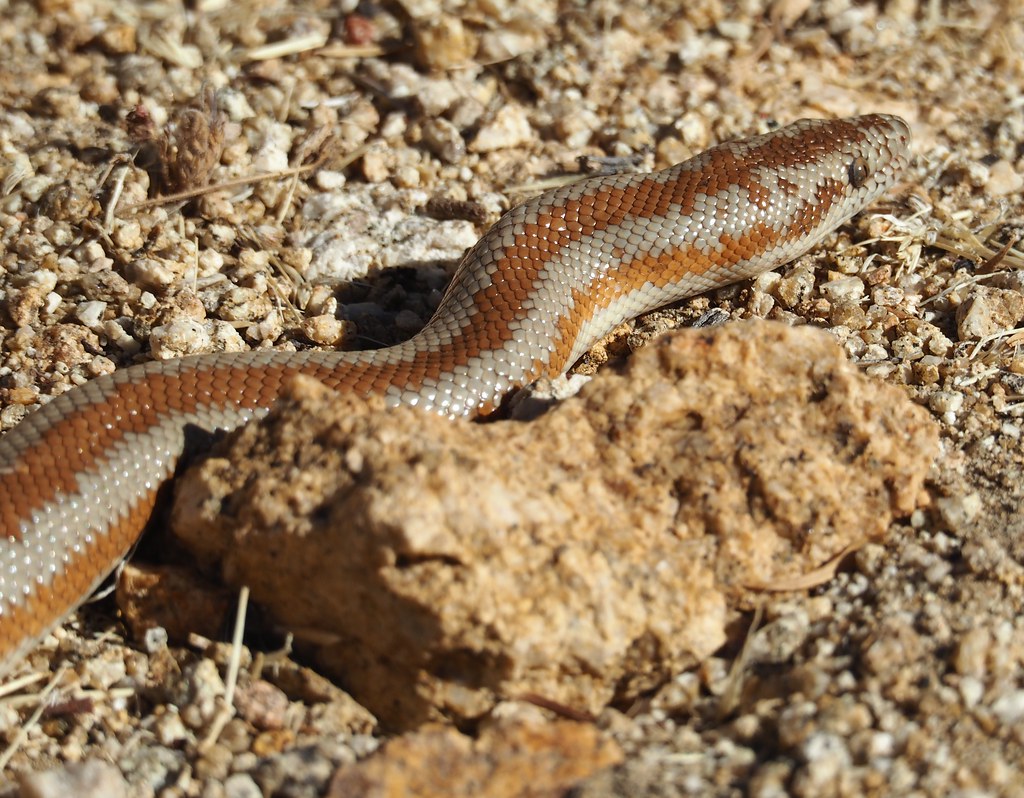
The rosy boa’s slow pace is just one of many specialized adaptations that allow it to thrive in extreme desert environments where few other snake species can survive. Their thick, cylindrical body shape minimizes surface area relative to volume, reducing water loss through their skin—a critical adaptation in habitats where rainfall may be absent for months at a time. Unlike many desert reptiles that must bask to raise their body temperature, rosy boas are primarily nocturnal and crepuscular, allowing them to avoid the most intense daytime heat while hunting when temperatures are more moderate. Their powerful constricting ability enables them to subdue prey quickly with minimal energy expenditure, while their ability to consume large meals allows them to go weeks or even months between feedings if necessary. Perhaps most impressively, they can drastically lower their metabolic rate during extended periods of food scarcity or extreme temperatures, entering a state of torpor that further conserves precious energy resources.
Rosy Boas in Captivity
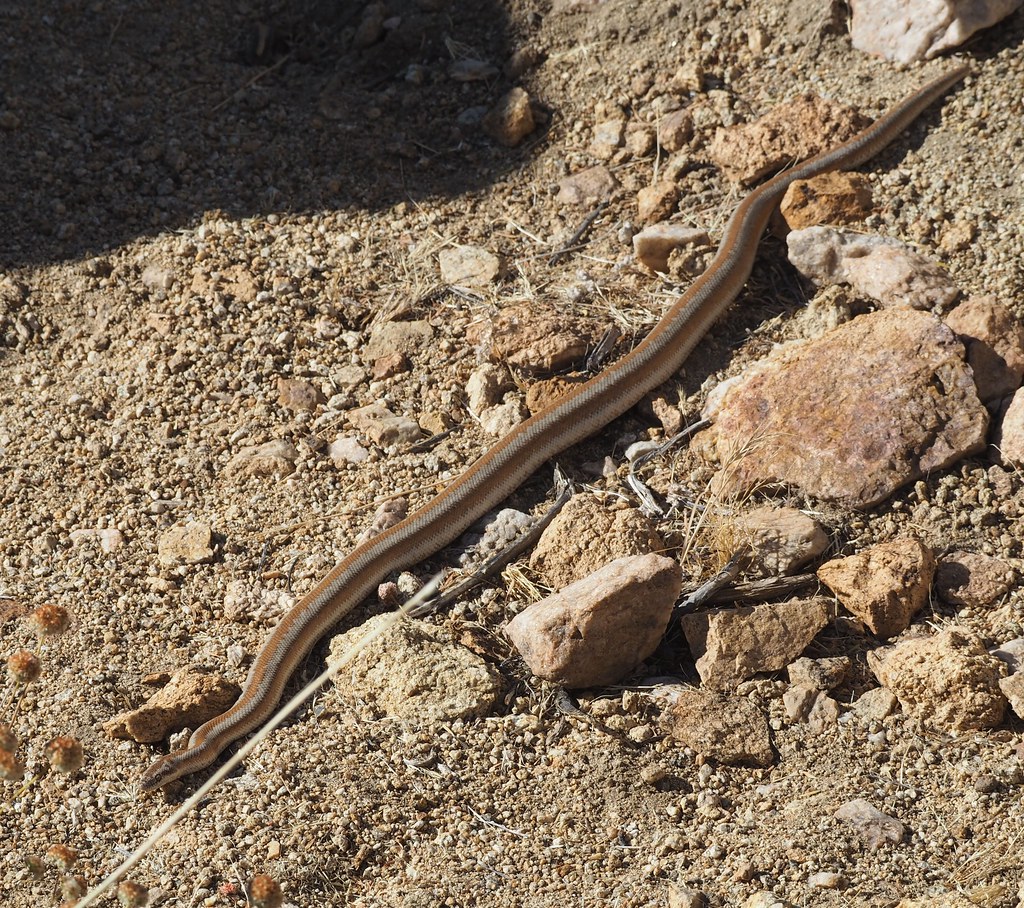
The docile nature and manageable size of rosy boas have made them popular in the reptile pet trade, where they’re valued for their gentle temperament and relatively simple care requirements. As captives, they thrive in enclosures that mimic their natural arid habitat, with temperatures ranging from 75-85°F (24-29°C) and a warmer basking area of 88-92°F (31-33°C). Their slow metabolism means they need feeding less frequently than many other snake species, typically accepting a single appropriately-sized rodent meal every 10-14 days. Unlike many reptiles that stress easily in captivity, rosy boas generally adapt well to gentle handling and can become quite tame with regular interaction. Their longevity is particularly notable in proper captive conditions, with well-cared-for specimens often living 20-30 years, making them a long-term commitment for owners.
Scientific Research and Discoveries

Researchers studying the rosy boa have made several fascinating discoveries about these slow-moving serpents that continue to advance our understanding of reptile biology. Recent genetic studies have revealed that what was once considered a single species may actually represent three distinct species with unique evolutionary histories and subtle morphological differences. Physiological research has documented their extraordinary ability to lower metabolic rates during periods of inactivity, achieving reductions of up to 70% compared to their already slow baseline metabolism. Behavioral ecologists have mapped their hunting patterns using radio telemetry, discovering that individual snakes often maintain fidelity to specific ambush sites for years, returning to the same hunting locations repeatedly despite traveling considerable distances between feedings. Perhaps most surprisingly, research into their sensory biology has revealed that despite their slow movement, they possess strike speeds comparable to much faster snake species, demonstrating that selective pressure has maintained this critical feeding ability even as other aspects of their movement have slowed dramatically.
Cultural Significance and Human Interactions

Throughout their range, rosy boas have featured in the cultural traditions and folklore of indigenous peoples who share their desert homeland. Among certain Native American tribes of the Southwest, these gentle snakes were often viewed positively, sometimes considered symbols of patience and perseverance or even bringers of rain in arid lands. Their non-venomous nature and docile disposition have generally spared them from the fear and persecution faced by many other snake species. Early European settlers and explorers of the American Southwest often mentioned these distinctive striped snakes in their accounts, noting their unusually calm demeanor when encountered. Today, rosy boas serve as important ambassador species in conservation education programs, where their slow movement allows for close observation and their gentle nature helps dispel common fears about snakes. Wildlife agencies in California, Arizona, and Nevada now include rosy boa monitoring in their desert management plans, recognizing these slow-moving predators as indicator species for overall ecosystem health.
Conclusion: The Virtues of Taking It Slow

The rosy boa stands as a testament to the diverse evolutionary strategies that have allowed different species to thrive in challenging environments. As the world’s slowest non-venomous snake, it defies our expectations about predatory animals, demonstrating that sometimes patience and specialization can be more advantageous than speed and versatility. In our fast-paced human world, there’s something deeply compelling about a creature that has mastered the art of slowness, turning what might seem like a limitation into its greatest strength. The rosy boa reminds us that in nature, there is no single path to success—sometimes the race truly does go to the slow and steady. As desert environments face increasing pressures from human development and climate change, preserving these specialized reptiles becomes not just about saving an interesting species, but about protecting a unique evolutionary approach that has perfected the strategy of doing more with less, moving less to achieve more, and thriving by embracing limitations rather than overcoming them.





